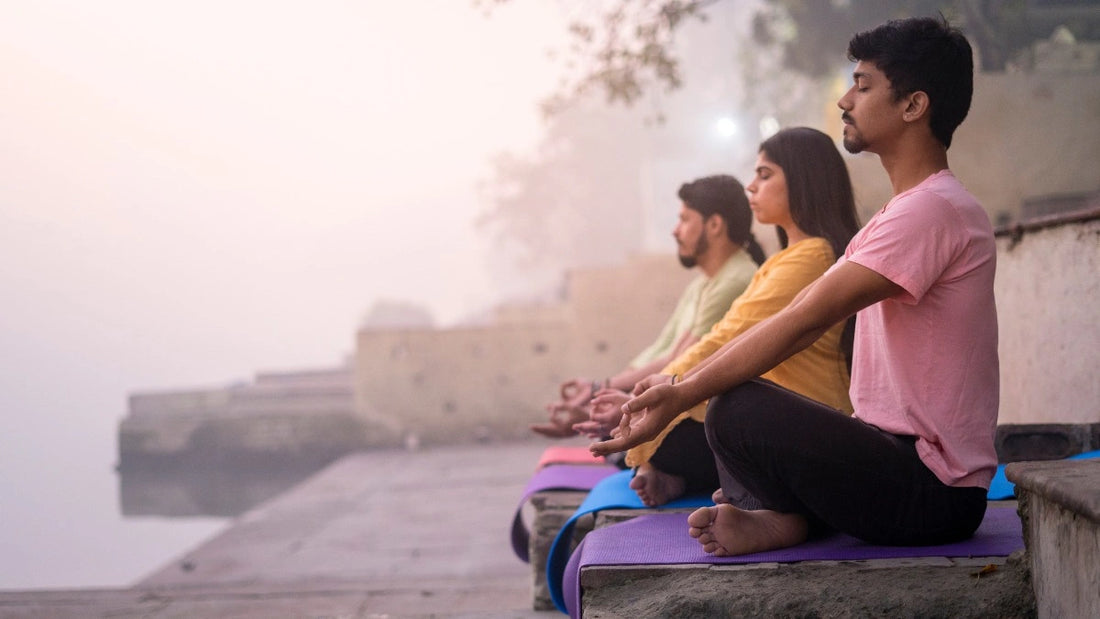In science of yoga the body is a medium that can be used in different ways for the final intend of drawing yourself from inward. Mudras are one of the powerful tools to achieve this. Mudras are hand gestures used in meditation for a specific aim of channelizing your body’s energy flow.
The historic gurus intuited the five basic elements that the human body is composed of – space, air, fire, water and earth. Hands have some energy points that stimulate these elements. Mudra is based on the principle of not only invoking these vibrant elements but also result in free action.
Here are some of the powerful and familiar 12 mudras:
Varuna Mudra - Also called as the buddhi mudra, it is a science of healthy communication and associated with mental clarity. Based on a basic principle that communication is the crux to a healthy lifestyle, staying swift and clear. This action helps balance the water elements in the body, the most important ingredient of the body. Regular practice revives the tissue ligament and cells dehydration.
For Varuna mudra, join the tip of thumb and little finger. It should be practiced 3-5 times a day anytime.
Apana Mudra - Considered very good for the digestive system, Apana mudra is helpful in facilitating healthy bowel and gastric problems. This gesture also signifies emotional stability to balance the evil outside the body.
For this posture, bring the second and third fingers of the hand to merge them behind the tip of your thumb.
Prana Mudra - Prana is the vibrance of life that is basis of existence for all the living beings. One of the most important mudras, this hand gesture activates the otherwise dormant body energy. This mudra helps awaken your inner prana and re-instill vitality in you for better tuning with other lives around you.
Bring the tips of your ring finger and little finger to touch the tip of the thumb and keep the remaining two fingers upright.
Apan Vayu Mudra - Known to be the mudra of heart, apan vayu balances the body elements. Also called as mrita-sanjeevani mudra since regular practice of this posture minimizes the risk of heart attack and chest pain, doing the mild task of sorbitrate medicine which is injected when a person suffers from an attack which facilitates the distention of the blood vessels and clears the obstruction of flow due to which the heart attack has occurred.
Bend your index finger in such a way that it touches the base of the thumb. Then, merge the tips of your thumb, middle finger and ring finger. This mudra is very effective when performed using both hands sitting straight in a comfortable posture.
Chin Mudra - Also popularly known as the jnana mudra, gesture of knowledge and wisdom, chin mudra connects to higher self, elevates the dullness and creates a receptive state of mind and calms the cells, thereby brightening the overall mood. When practiced along with pranayama and asana, chin mudra uplifts the mood and enlivens your better self.
Keep your hands with open palm on the thigh right above the knee portion, relaxed and straight. Fold the index finger under the tip of the thumb with rest of the fingers kept straight.
Pankaja Mudra - The lotus formation gesture, a symbol of purity, Pankaja mudra opens the chakras of the heart. Regular practice ensures to make you feel rooted and keep you grounded, draining out the misunderstanding or confusion to release the tension and impart grace on mind.
While sitting cross legged, join the base of the palm bringing together both the hands and bring it closer to the chest at the center of the heart. Then position the posture of hands such that the thumbs and little finger are placed against each other along with the outer portion of the palms with rest of fingers spread open facing the sun, completing the shape of a Pankaj (lotus in Sanskrit).
Vayu Mudra - This mudra is quite helpful in appeasing the air imbalances of the body from within such as chest and abdomen pain due to gas deposition, flatulence, bloating and joint pain. Vata associated problems of the health are relieved by balancing all the air elements.
Performed same as the Gyan mudra with slight variation, in Vayu mudra you should middle of the thumb to the knuckle of the index finger. Press the index finger against the thumb at your ease, keeping the three fingers straight.
Ganesha Mudra - Named after most famous Hindu God, Ganesha mudra helps in offering relief from various obstacles in life. Regular practice of this mudra helps attain positivity and grit to deal with hardships. The gesture facilitates centralizing your attention and energy to the center of your heart, causing the lungs and heart open through meditation. Besides enlivening you spiritually and mentally, the pulling motion benefits your heart muscles by strengthening them.
Keep the left hand in front of your chest with your palm facing outwards and left thumb down. Then place your right hand in front of your left hand with your right palm facing toward you and your left palm. Lock your fingers together, holding them in a half-bent position like a claw.
During meditation, take a deep breath, holding in Ganesha mudra, then pull outwardly on your hands as you breathe out without unlocking your fingers. Repeat the process 5-6 times, then reverse the gesture with right hand in front of your chest. Ensure to repeat the same times this mudra the same number of times in both directions to maintain the balance.
Rudra Mudra - Representing the Lord Shiva, the mudra is about the internal transformative abilities. This gesture improves clarity and concentration of thought. It is recommended for people experiencing dizziness, exhaustion, and chronic tension in their body. Rudra mudra energizes the physical body and empowers you to reach your maximum potential.
To do this mudra, bring together the tip of your thumb, index and ring fingers while keeping your other two fingers as straight as possible.
Shuni Mudra - Adopted from the empowerment of elements of space and fire, this mudra is used to expand insight, attentiveness and sensory powers. It also purifies the emotions and thoughts.
Touch the tip of the middle finger to the thumb tip, while keeping the other three fingers straight and relaxed.
Dhyana Mudra - Popular among the eastern yoga discipline, Buddha idol is usually seen with this gesture. The importance of this mudra is to develop deeper and more profound concentration. This gesture can also help bring you calmness and inner solitude.
To do the Dhyana mudra, rest your right hand on the top of your left palm. The right hand, representing enlightenment and higher spiritual abilities, rests over the left hand, representing the world of maya, or illusion.
Surya Mudra - With an intention to maximize the fire element of the body, represented by the ultimate source of power, the sun, Surya mudra reduces the heaviness and improvises metabolism and digestion. Regular practice helps keep cold at bay by increasing the body temperature at the core.
For Surya mudra bend your ring finger to the base of your thumb so that your thumb touches the ring finger’s knuckle. Stretch your other three fingers straight without stressing the hand.
The gestures can be performed in variations depending on the practicing guru you learn from. However, at the core of each of these mudras there is health, balance and bliss.

